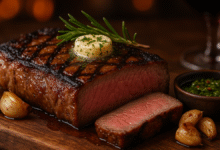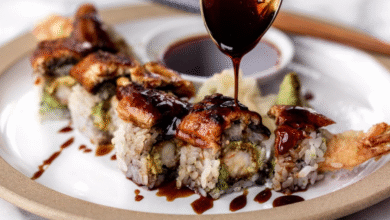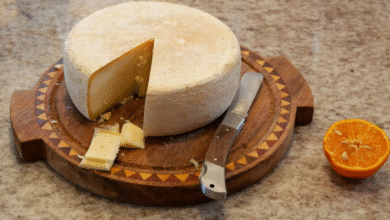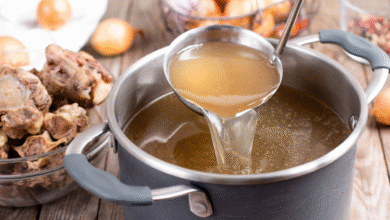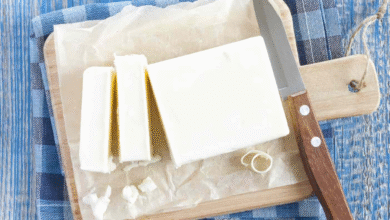Polish Sausage: A Flavorful Tradition in Every Bite
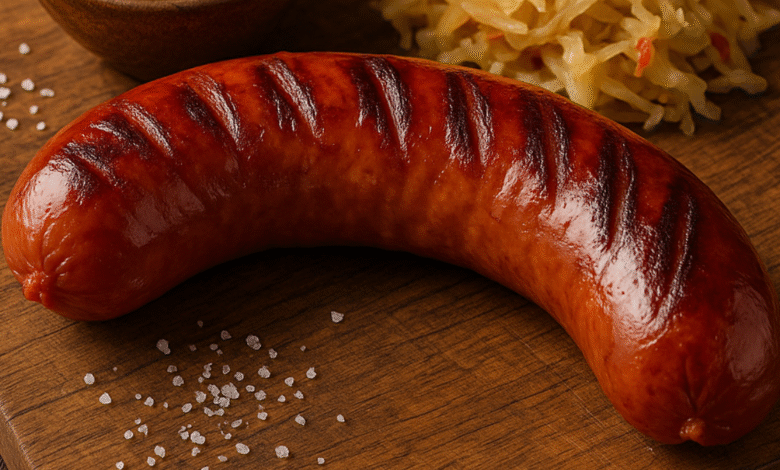
Discover the rich history, types, and cooking methods of Polish sausage. Learn how to make the perfect kielbasa and explore tasty recipes for every occasion.
Polish sausage, known as kielbasa, has become a cherished staple in kitchens worldwide, renowned for its rich history, bold flavors, and versatility in countless dishes. Whether you’re grilling it at a summer BBQ, adding it to a hearty stew, or enjoying it with mustard and bread, Polish sausage is a delightful treat that never goes out of style.
In this article, we’ll delve into the origins of Polish sausage, its different types, how it’s made, and its cultural significance. We’ll also explore the nutritional benefits, cooking methods, and popular recipes featuring this beloved meat. By the end of this guide, you’ll be well-versed in the world of Polish sausage, from its traditional roots to its place in modern kitchens across the globe.
The Rich History of Polish Sausage
Polish sausage has a deep-rooted history that spans centuries, emerging as a food that holds cultural significance in Polish traditions. Its earliest records can be traced back to the Middle Ages, where it was considered a valuable commodity, especially during festive seasons and feasts.
Polska, the homeland of kielbasa, is renowned for its culinary contributions to the world, and sausage making is no exception. Traditional Polish sausage is crafted using a variety of meats, primarily pork, but sometimes beef or veal. The sausages are seasoned with a combination of garlic, marjoram, and other spices, creating a distinct and flavorful taste.
The word “kielbasa” itself is derived from the Polish language, simply meaning “sausage.” However, kielbasa in Poland is more than just a food item – it’s a symbol of Polish hospitality, often served at family gatherings, celebrations, and special events. It’s a staple in traditional Polish cooking, and no meal is truly complete without a serving of this beloved dish.
Different Types of Polish Sausage
Polish sausage isn’t just one variety—it encompasses a range of different types, each with its unique characteristics. From smoked sausages to fresh varieties, the options are nearly endless.
Smoked Kielbasa: This is perhaps the most iconic variety, characterized by its smoky, savory flavor. The meat is typically cured and then smoked to perfection, making it a popular choice for grilling or serving cold on charcuterie boards.
Fresh Kielbasa: Unlike its smoked counterpart, fresh kielbasa is not cured but rather seasoned and packed fresh. It’s ideal for cooking on the stovetop, in the oven, or on the grill. It offers a more subtle flavor and can be paired with a variety of sides like sauerkraut or potatoes.
Garlic Kielbasa: This version is packed with robust garlic flavor, one of the most prominent spices in Polish cooking. Garlic kielbasa is perfect for those who love the bold, zesty taste of garlic in their meals.
Hunter’s Sausage (Kielbasa myśliwska): This particular type of sausage is traditionally made with pork and beef, giving it a hearty, savory taste. It’s typically smoked and dried, making it perfect for long storage and is often used in Polish stews and soups.
Each type of kielbasa has its distinct use in Polish cooking, and choosing the right one depends on the dish you’re preparing. Whether you prefer the deep, smoky notes of a traditional smoked kielbasa or the lighter, garlicky kick of fresh kielbasa, there’s a variety to suit every palate.
The Art of Making Polish Sausage
The process of making Polish sausage is an art form in itself. Though methods can vary depending on the region and specific recipe, the basic principles remain the same. Here’s a general overview of the traditional steps involved in crafting this iconic sausage:
- Selecting the Meat: High-quality cuts of pork, beef, or veal are chosen for their texture and fat content. The meat is often ground twice to ensure the proper consistency for sausage stuffing.
- Seasoning the Meat: The key to the distinctive taste of Polish sausage lies in the seasoning. Garlic, marjoram, black pepper, and salt are mixed into the ground meat, giving kielbasa its bold and aromatic flavor profile. Some recipes also include additional herbs and spices for added complexity.
- Stuffing the Sausage: Once seasoned, the meat is carefully stuffed into casings, typically made from natural animal intestines. The casings are then tied off and ready for the next stage of the process.
- Curing and Smoking: Many Polish sausages are either smoked or cured to enhance their flavor. The sausages are placed in smokehouses, where they are slowly smoked over wood chips, which imparts the rich, smoky aroma that makes kielbasa so irresistible.
- Cooking: Depending on the type of kielbasa, it can either be sold fresh or fully cooked. Smoked kielbasa is often ready to eat, while fresh kielbasa requires cooking before consumption.
The entire process takes time and attention to detail, ensuring that each link of Polish sausage is crafted to perfection. It’s no surprise that kielbasa has become an integral part of Polish culture, passed down from generation to generation.
Nutritional Benefits of Polish Sausage
Polish sausage, though delicious, is often associated with being a rich, indulgent food. However, when enjoyed in moderation, kielbasa can offer some nutritional benefits.
- Protein: Polish sausage is a great source of protein, which is essential for muscle repair and growth. Protein also plays a key role in immune function and overall health.
- Vitamins and Minerals: Depending on the type of meat used, Polish sausage can provide essential vitamins and minerals like B vitamins (especially B12), iron, and zinc. These nutrients are crucial for energy production, red blood cell formation, and immune function.
- Healthy Fats: While the fat content in Polish sausage can be high, it contains both saturated and unsaturated fats, which can support cardiovascular health when consumed in moderation.
- Caloric Intake: Polish sausage is calorie-dense, meaning it can be a hearty addition to a balanced meal. However, because of its richness, it’s best enjoyed alongside vegetables or grains to create a well-rounded dish.
While Polish sausage isn’t the healthiest food option, it does provide a variety of essential nutrients and can be a flavorful component of a balanced diet when consumed occasionally.
Popular Polish Sausage Recipes
Polish sausage is incredibly versatile, making it a popular ingredient in many recipes. Whether it’s a simple grilled sausage or part of a more elaborate dish, kielbasa can be incorporated into various meals. Here are a few classic ways to enjoy Polish sausage:
Grilled Kielbasa: One of the simplest and most delicious ways to prepare Polish sausage is by grilling it. Whether you’re using smoked or fresh kielbasa, grilling adds a smoky, charred flavor that enhances its natural richness. Serve it with mustard, sauerkraut, or grilled vegetables for a classic Polish feast.
Kielbasa with Sauerkraut: This traditional Polish dish pairs the savory flavor of kielbasa with the tangy bite of sauerkraut. The sausage is typically browned in a pan and then simmered with the sauerkraut for a hearty, comforting meal.
Kielbasa Stew: For a warming and filling dish, try making a kielbasa stew. Combine kielbasa with potatoes, carrots, onions, and herbs in a rich broth for a satisfying, one-pot meal that brings out the flavors of the sausage.
Frequently Asked Questions (FAQs)
1. What is the best way to cook Polish sausage?
Polish sausage can be grilled, pan-fried, boiled, or added to stews. Grilling and pan-frying are the most popular methods, as they create a crispy, flavorful exterior while keeping the inside juicy.
2. Can I use Polish sausage in recipes other than traditional Polish dishes?
Absolutely! Polish sausage is versatile and can be used in many types of cuisine. It works well in soups, pastas, and even breakfast dishes like omelets and scrambles.
3. Is Polish sausage spicy?
Polish sausage is typically not spicy, though certain varieties, such as garlic kielbasa, may have a slight kick. It’s more about the richness of the flavor and the depth of seasoning rather than spiciness.
4. How long does Polish sausage last in the refrigerator?
Fresh Polish sausage can last 1-2 days in the fridge, while smoked kielbasa can last for up to 2 weeks if properly stored. Always check the packaging for specific storage guidelines.
5. Is Polish sausage healthy?
While it’s not the healthiest food option due to its fat content, Polish sausage can provide beneficial protein and essential nutrients when consumed in moderation.
Conclusion: A Timeless Delight
Polish sausage is much more than just a food; it’s a symbol of tradition, culture, and hospitality. Whether you’re enjoying it at a festive celebration or as a hearty meal, kielbasa brings people together with its rich flavors and comforting nature. By learning about its history, variations, and culinary uses, you can truly appreciate the art of making and enjoying Polish sausage.

